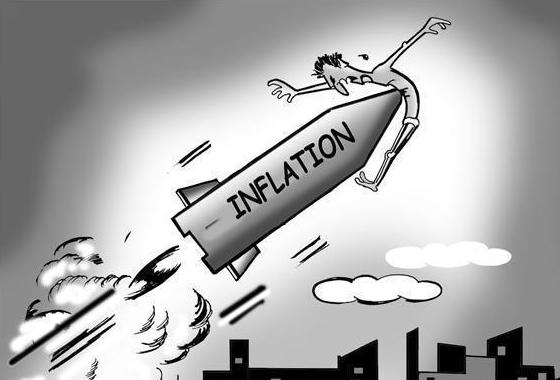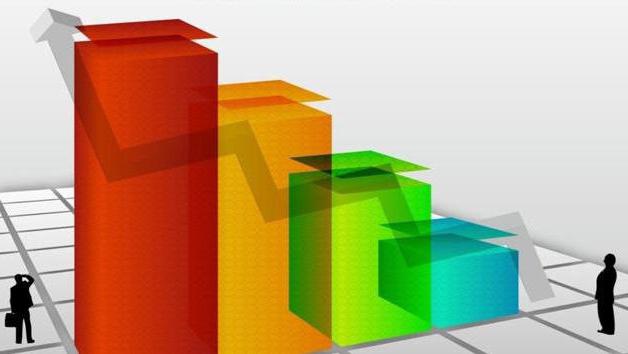As an economic phenomenon, inflation has been around for quite some time. It is generally accepted that it arose along with the appearance of money, with the action of which it is directly connected. The historical causes of inflation are related to the spread of paper money. An overflow of money circulation was also characteristic of those times when only metallic money was used.

Historical roots
The role of money in antiquity was played by bullion of precious metals, which were checked by merchant guilds for compliance with weight and samples. The most important state monopoly in those days was the minting of coins from precious metals, and then from copper and iron. But the state did not receive any income from this if the coins were fully consistent with the face value. However, with a decrease in the content of precious metals while maintaining the previous face value, the government has a new source for replenishing budget revenues. This process was called “coin deterioration,” and these were the first causes of inflation. When did paper money, monetary-monetary inflation has moved to a new level, becoming paper money.
In the case of the use of paper circulation, money has become just a symbol, and not real wealth. Savings are best preserved when buying real estate or jewelry. It is very difficult to accumulate paper money as savings. Their main share is always in circulation. When the population has them, it increases aggregate demand which allows you to increase prices. It turns out that the causes of inflation are mainly associated with paper money circulation. But there are other points.
General concept
The causes of inflation, as well as this concept itself, are still rather complex and ambiguous. This term appeared at a time when countries switched to paper money circulation, and it reflects the overflow of turnover with these means of payment. For a long time inflation was understood as the depreciation of money and rising prices for goods, therefore, it was recognized as a monetary phenomenon. Some foreign authors now say that the economic consequences of inflation are associated with a general increase in prices in the economy.
From Latin, this term can literally be translated as overcrowding of circulation channels with an excess of paper money that is not provided with a corresponding increase in the mass of commodities. Traditionally, inflation basically has several causes connected with each other, and it manifests itself not only in the increase in the price level, but also in the shortage of goods with a simultaneous deterioration in their quality. Reasons and consequences of inflation and now they are not uniquely determined by economists.

Definition
The most complete definition is as follows: inflation is a process of depreciating money, falling its purchasing power, which is associated with higher prices, lower quality of services and goods, as well as a shortage of goods. Any model of economic development is subject to this process, if there is an imbalance in government revenues and expenditures, and a restriction on the Central Bank’s ability to pursue an independent monetary lending policy. The causes of inflation can be either independent or stimulated by the state, when all other types of redistribution of the product of public importance and national income have already been used. There are other factors.The underlying causes of inflation are for the public sector, as well as for the manufacturing sector, where they are most often caused by economic and political relations within the country.
Current situation
At the moment, inflationary processes are associated not only with indicators such as a decrease in the ability to buy money as a result of higher prices, but also with the general state of development of the country's economy as a whole. It is determined by the contradictions associated with the production process, generated by all kinds of factors in the field of sales and production, as well as money circulation, finance and credit.

The causes and consequences of inflation affect the state of affairs within the country. The root cause can be called the imbalance between different sectors of the economy - consumption and accumulation, supply and demand, government spending and income, cash needs and money supply in circulation.
Factors
It is customary to distinguish between internal and external factors of inflation.
Domestic conditionally divided into monetary and non-monetary. The former include the state budget deficit, overflow of the circulation sector with an excess of paper money due to their excessive emission, aimed at covering the budget deficit, increasing the speed of money circulation, increasing the state debt, over-saturation of the economy with loans, government measures to maintain the state currency, restriction of its changes and others.
External factors are associated with such moments as world structural crises (energy, currency, raw materials), the state’s monetary policy, which is aimed at exporting inflation to neighboring countries, illegal export of foreign currency and gold, a negative balance of payments, and a reduction in foreign trade income.
Non-monetary causes and types of inflation are associated with structural imbalance in social reproduction, monopolization of production, imbalance of investments, costly management mechanism, state economic, tax and financial price policies, foreign economic activity and others.
Factor Dependence
From the foregoing, it is clear that inflation is a process with many factors, that is, this is a manifestation of disproportion in the formation of social production due to a violation of the law on the circulation of funds. The specific list of factors and the degree of their influence in a particular country depends entirely on its distinctive features and socio-economic development.
Depending on which factors of a particular group prevail, it is customary to distinguish between inflation of demand and inflation of costs.
Demand inflation
This type is caused by an increase in demand for products, that is, buyers have ways to pay more for a particular type of product. Manufacturers are not able to immediately respond to such an increase in demand by increasing output volumes, therefore, depending on the circumstances, either the price increases or production volumes increase. In this case, the regulation of inflation is a rather complicated process, since due to increased demand prices for the real volume of output are constantly growing.
The following factors can serve as factors for this type:
- militarization of the economy with a constant increase in military spending;
- the growth of public debt with a budget deficit;
- bank credit expansion;
- the influx of foreign currency from abroad.
Demand inflation it is usually observed provided that the price level increase is influenced by the general increase in aggregate demand.
Cost inflation
This type is expressed in rising prices due to increased production costs.This inflation mechanism has the following mechanism: with relatively constant demand, prices for goods and services increase due to the fact that production costs increase, that is, the cost of production increases. Enterprises are not able to trade at a loss for a long time, so they are forced to increase the value of goods. In this case, inflation control is entirely in the government department, since in the absence of adequate measures in response to a decrease in demand, the economy goes into a recession.

The cost of production can increase due to the influence of factors such as rising costs of energy, raw materials and wages. Because of this, profits can be reduced, as well as the volume of finished products that the company can offer at the current price level. The result will be a restoration of the balance of supply and demand, but the price will be higher.
Reasons and types of inflation
In theory and practice, it is customary to distinguish several types of these processes. You should consider those that occur most often. Depending on how the price rises in the market, you can distinguish creeping, galloping and hyperinflation.
Creeping differs in relatively low rates of price growth - the percentage of inflation is up to 10% per year. It is characteristic of most countries with market economies. It is not accompanied by crisis shocks, it is a moderate price increase that does not have a strong impact on the economic situation inside the country. The profitability of savings remains, the risks for investors are almost not growing, the standard of living is slightly increasing.
Galloping difficult to manage. The percentage of inflation for the year may be 10-200%. Such a phenomenon has a negative impact on the economy: savings become unprofitable, long-term investments become risky, and the standard of living of the population drops sharply. This type is typical for countries with transition economies.

Hyperinflation different rates of price increases of 50% or more per month, which is more than 1000% year on year. This type simply destroys the economy, destroys savings, the investment mechanism, due to which the pace of production is greatly reduced. Prices and wages diverge simply catastrophically, wealth falls, and the largest enterprises become unprofitable. Economically, the consequences of inflation of this type are simply fatal, since the effect of refusing money in the direction of turning it into goods is sharply increasing. Economic ties are being destroyed, and all interactions are moving to barter exchanges.
Other reasons
The components of inflation can have a different nature, in particular, it is exorbitant money emission when prices rise due to an increase in the money supply. This view is called issuing. It arises from the violation of the laws of monetary circulation by the central bank, which monopolized the issue of money.
Inflation tax - This is another important aspect that is most pronounced during hyperinflation. This type of taxation represents those costs that are offset by rising price levels. In this way, the state finances the deficit in order to maintain real cash balances at the same level, which is why the effect is equivalent to levying taxes for the same amount. This method is effective, since it does not allow tax evasion, but it can lead to the collapse of the entire economy of the country. Such causes of inflation have never been encountered in Russia.
Forms of manifestation
In accordance with this point can be distinguished open and depressed inflation. In the first case, everything is clearly visible, which affects pricing. Suppressed inflation is characterized by the absence of rising prices for services and goods, but the depreciation of money is expressed in the deficit of supply.Open inflation is typical for countries with market economies, where the interaction of supply and demand causes open and unlimited price growth. The fight against inflation in this case is possible due to the fact that prices serve as signals that demonstrate to producers and consumers the areas where investing will be most profitable.
findings
Having considered all types, we can say that inflation, in whatever form it occurs, is the result of disequilibrium in different markets and is associated with factors that disorganize the circulation of money, which affects the state as a whole. And the economic consequences of inflation in any case will be noticeable after a certain period of time.
